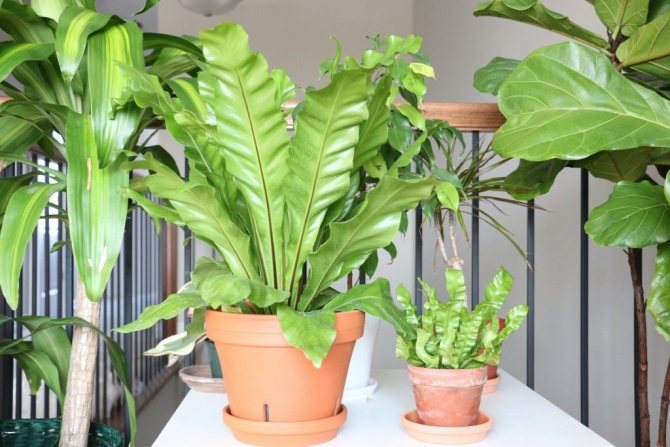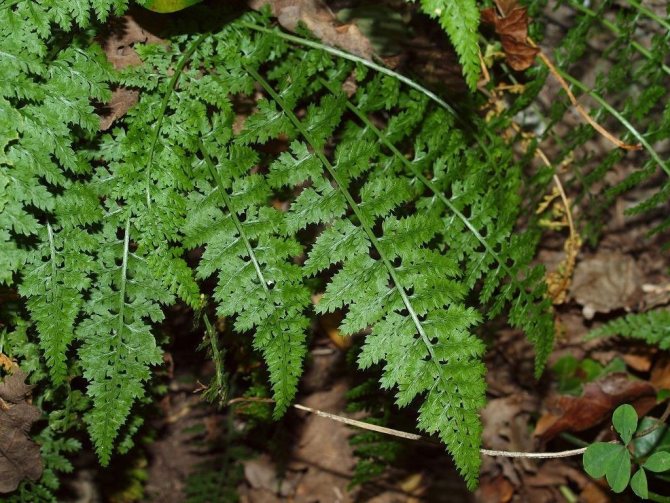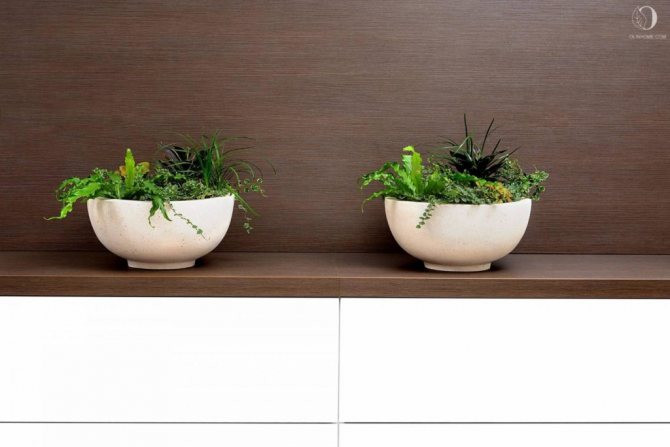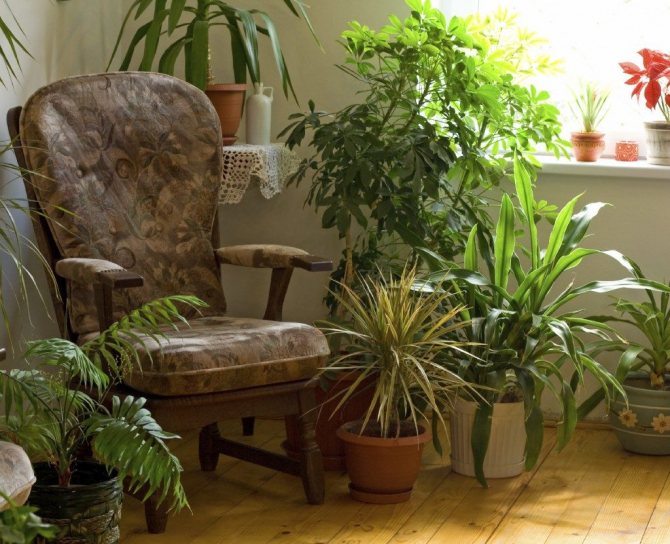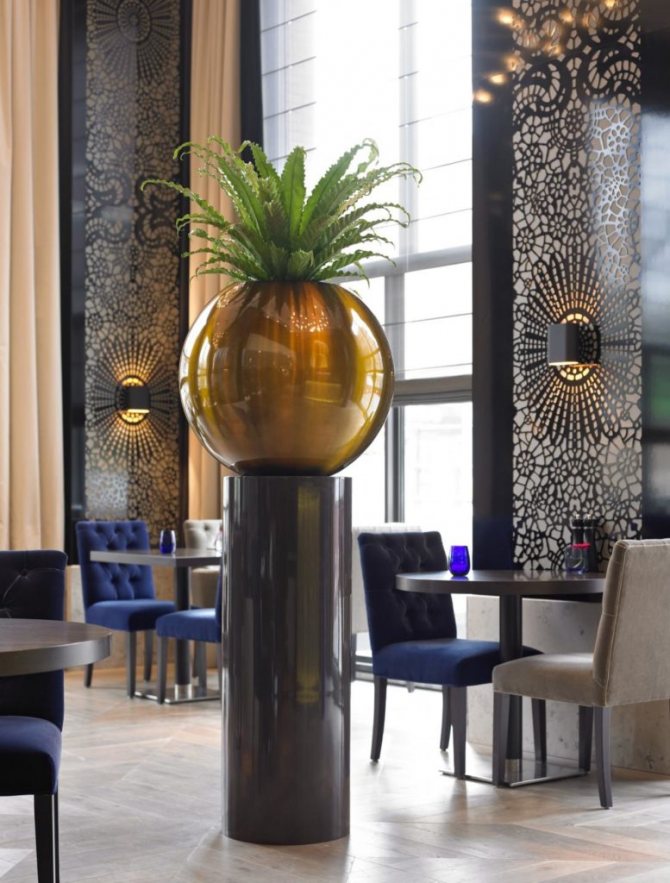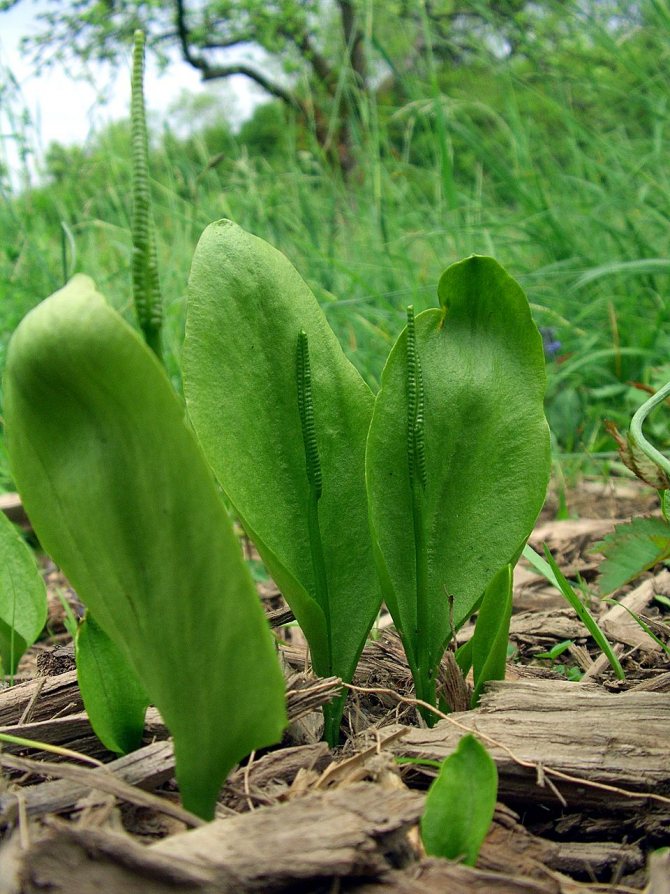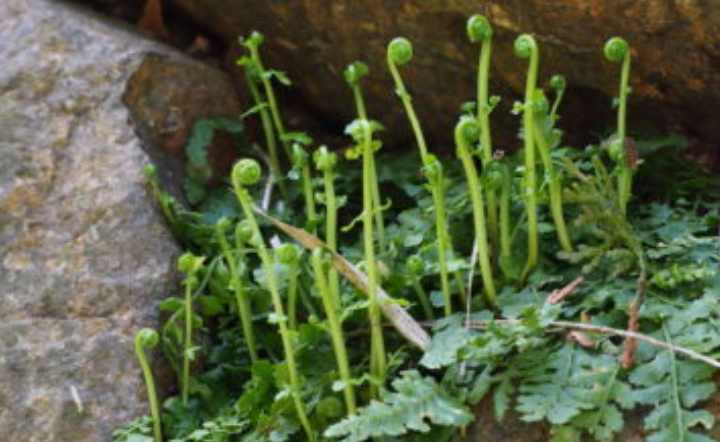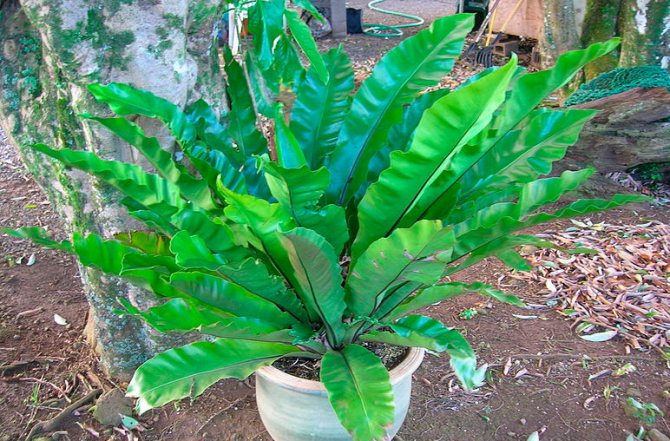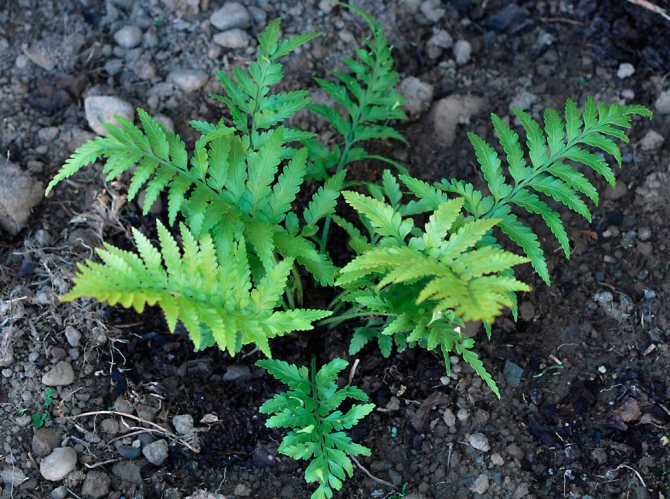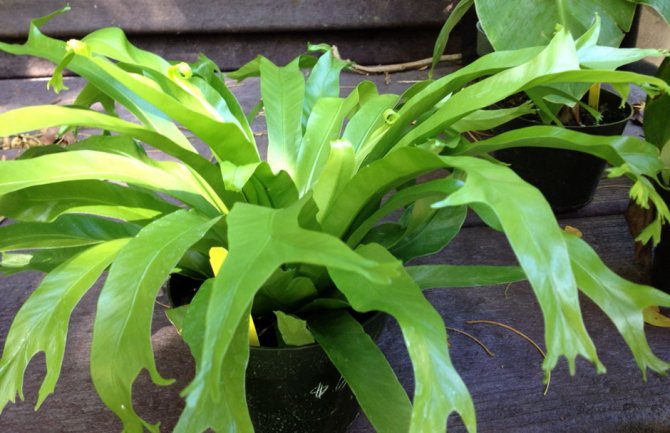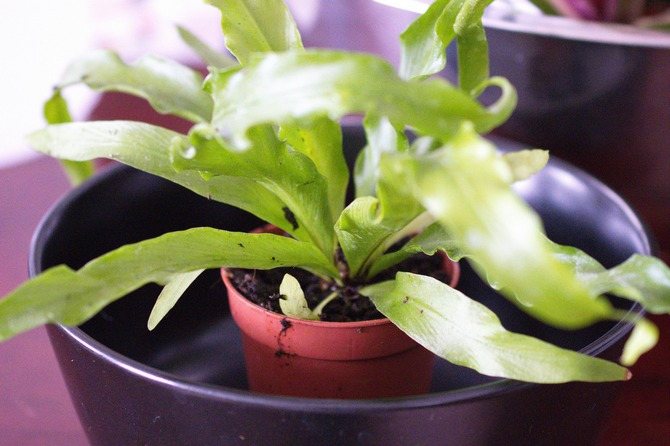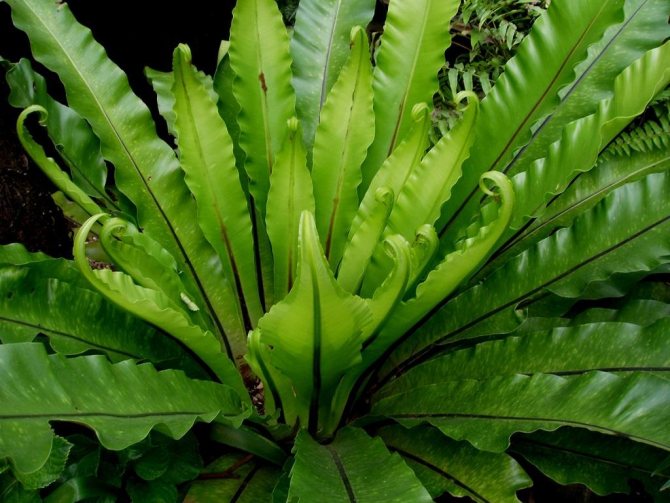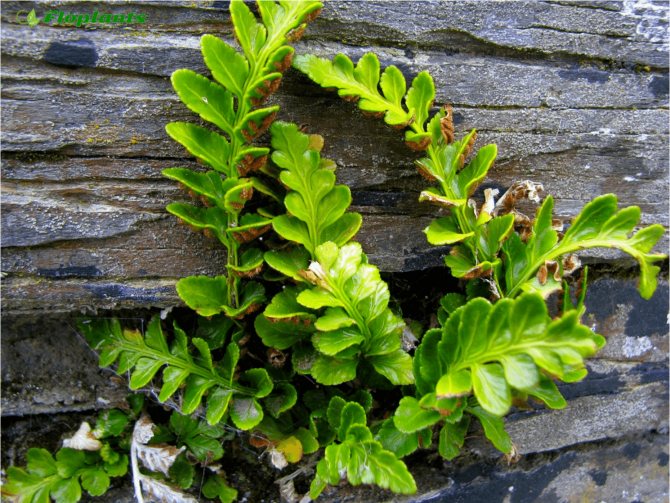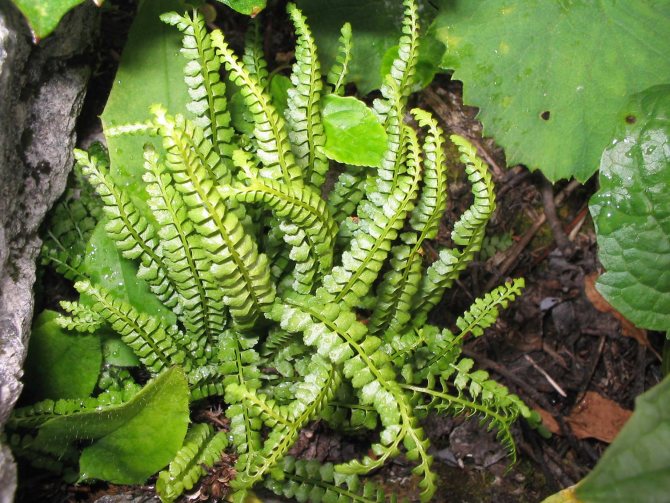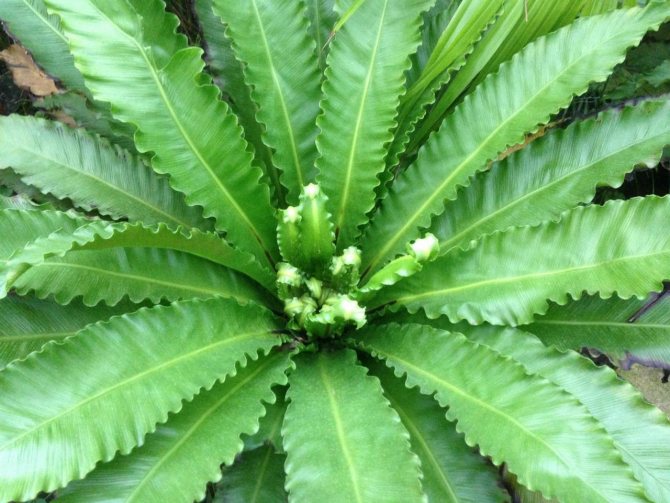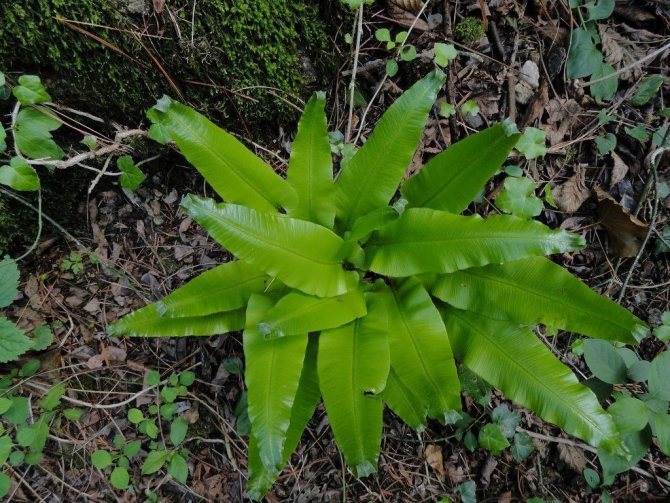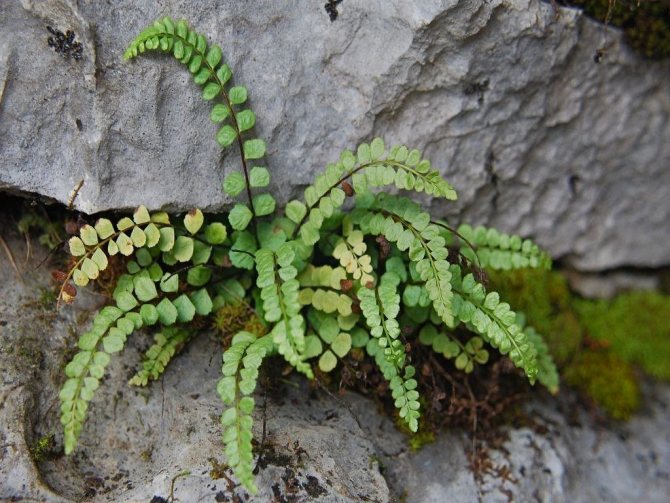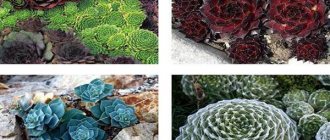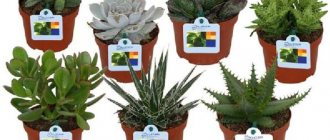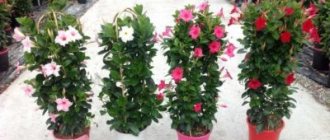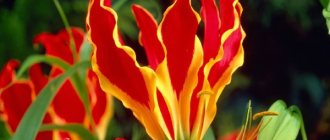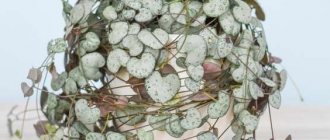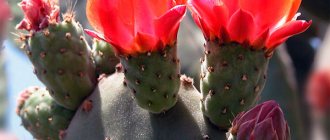Asplenium is a very modest and very beautiful fern. In our country, you can find about eleven varieties of kostenets.
In temperate latitudes, in most of them there are short plants with fleshy leaves and a short rhizome. In regions with a tropical climate, the plant is larger, the leaves are long or complex and resemble small green fountains that can grow up to two meters in length.
Species that live on cliffs and forest soils with a share of stones take root well in open land, mountain landscapes, gardens with pebbles, shade with regular moisture. The species from the tropics are among the most popular plants for home keeping.
We advise you to read also about a similar plant - Centipede leaf fern.
Description of asplenium
Genus Asplenium, or Kostenets (Asplenium) unites about 500 species of ferns of the Asplenium family. These are perennial herbaceous plants, terrestrial epiphytes; the rhizome is creeping, short, protruding, sometimes erect, with soft scales. Leaves are simple, whole to pinnately dissected, smooth. Sporangia (reproductive organs) are located on the underside of the leaves, on forked free veins. The petiole is dense.
Aspleniums are widespread in all zones of the western and eastern hemispheres, among the representatives of the genus there are deciduous species, as well as non-hardy and winter-hardy.
In culture, they are represented by species that are outwardly very different from each other. In indoor culture, evergreen tropical species are more often cultivated.
Popular types of indoor asplenium
Asplenium South Asian (Asplenium australasicum)
Homeland - Eastern Australia, Polynesia. Epiphytic plant with large, up to 1.5 m long, 20 cm wide leaves. They are collected in a dense, rather narrow funnel-shaped rosette. The rhizome is straight, thick, covered with scales and many tangled adventitious roots. Leaves are whole, sometimes irregularly cut, obverse-lanceolate, with the greatest width in the middle or just above the middle of the blade, rather sharply tapering towards the bottom into a very narrow base. Sori (spore-bearing organs) are linear, located obliquely in relation to the midrib of the leaf.
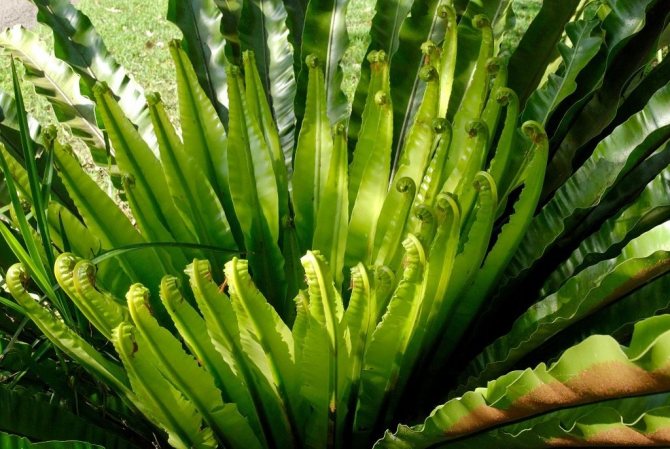
South Asian Asplenium, or South Asian Kostenets (Asplenium australasicum).
Asplenium nesting (Asplenium nidus)
Homeland - tropical rainforests of Africa, Asia and Polynesia. In nature, this fern leads an epiphytic way of life, on the trunks and branches of other plants. It has a thick rhizome and leathery large whole xiphoid leaves reaching large sizes. They form a dense rosette at the top of the rhizome. On uncut leathery, green leaves there is a black-brown median vein.
The leaves, together with the scaly rhizome and tangled roots, form a kind of "nest", which is why it is sometimes called the bird's nest fern. Asplenium nesting is easy to breed indoors. In culture, it is not so huge, but it looks very impressive.


Asplenium breeding, or Kostenets breeding (Asplenium nidus).
Asplenium scolopendrium
The centipede asplenium is very similar to the nest-like asplenium. Sometimes occurs as centipede leaf (Phyllitis scolopendrium), they also call it "deer tongue".In England and Germany, this plant is found in the wild, there are many of its hybrid forms. The belt-like leaves first grow upward, and eventually bend in an arc. The edges of the leaves are wavy, in the varieties crispum and undulatum they are curly. The plant is ideal for green gardens and cool rooms.
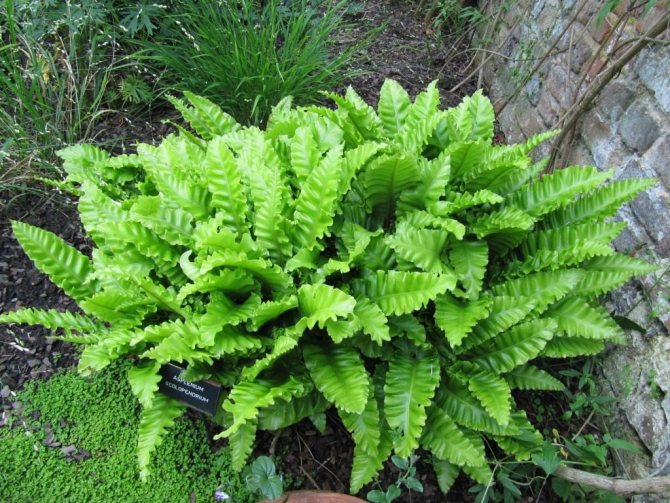

Asplenium scolopendrium, or Asplenium scolopendrium.
Asplenium bulbiferum
Homeland - New Zealand, Australia, India. Herbaceous deciduous fern. Leaves are three times pinnate, oblong-triangular, 30-60 cm long and 20-30 cm wide, light green, hanging from above; The petiole is straight, up to 30 cm long, dark. Sporangia are located on the underside, one on each lobe. Brood (adventitious) buds are formed on the upper side of the leaves; they still germinate on the mother plant. Asplenium onion-bearing is widespread in culture; grows well in rooms and moderately warm areas.


Asplenium bulbiferous, or Asplenium bulbiferum.
Asplenium viviparum (Asplenium viviparum)
The birthplace of the viviparous asplenium is the island of Madagascar, the Macarena Islands. Terrestrial perennial rosette plant. Leaves with short petioles, twice and four times pinnate, 40-60 cm long, 15-20 cm wide, arcuate curved. The segments are very narrow, linear to almost filiform, up to 1 cm long, about 1 mm wide. Sori are located along the edge of the segments. On the upper side of the fern leaves, brood buds develop, which germinate on the mother plant. Falling into the ground, they take root.


Asplenium viviparous, or Kostenets viviparous (Asplenium viviparum)
Varieties and photos
The whole variety of ferns can be seen only in natural habitat. Only a small number of species have been domesticated by humans. Below are photos and descriptions of Asplenium varieties suitable for reproduction and home care.
Nest (nidus)
An epiphytic fern, inhabits the wood of large trees in tropical forests. Scaly thick rhizomes absorb moisture and nourish lush greenery. Elastic solid fronds form a dense rosettelike a bird's nest. For this comparison, the fern got its name. The petiole at the base of the leaf is brown. The photo below shows the Asplenium Nidus:
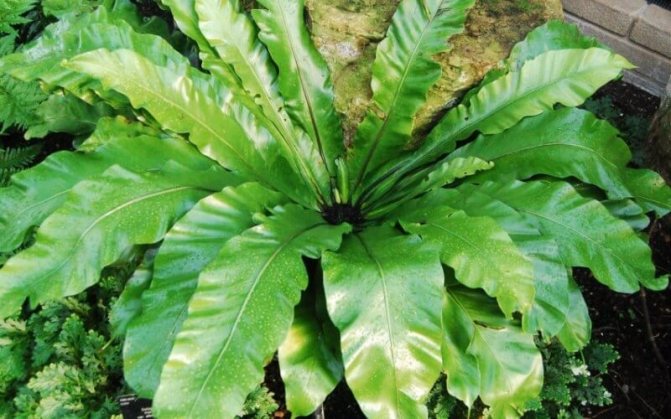

Onion-bearing
This species lives on rocky surfaces, near trees. He is not afraid of cold snaps, even frosts. Defending himself, he discards foliage at an unfavorable time. The onion-bearing asplenius has hanging dissected fronds, which are located on a solid petiole. The leaf has a length of 35 to 55 centimeters, a width of 22-35 centimeters. The leaves contain buds-bulbs. These are the future babies of the fern. When they mature, they crumble into the ground. Coming into contact with the nutrient medium, they begin to germinate.


Viviparous
An evergreen perennial plant that grows on the ground. It has pinnately dissected leaves with short petioles. The length of the frond is not more than 65 centimeters, the width is 23 centimeters. The segments are narrow, needle-like, similar to needles. On the underside of the sheet, along the edges, there are spores. At the top of the frond there is a kidney that grows into a baby.
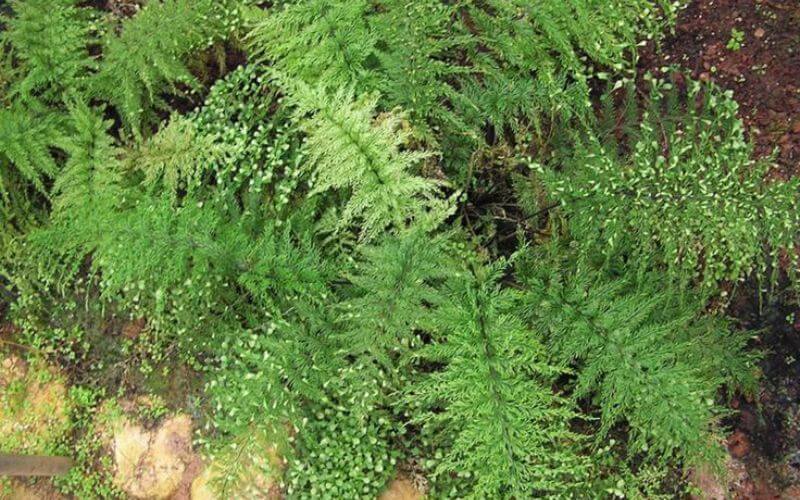

Osaka
The specific specimen differs from other relatives by its giant fronds of light green color. The leaf is solid, about 1 meter long, 25 centimeters wide... Osaka is rarely used for domestic breeding.
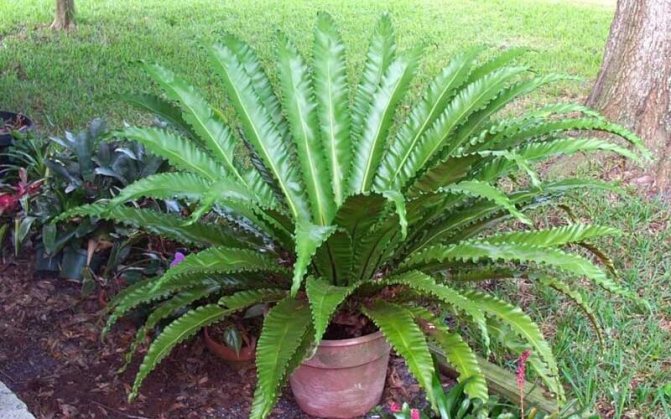

Hairy
The height of this fern reaches 40 centimeters. Rhizomes are small, shortened with scales. The color of the aboveground part of the plant is dark green. The fronds are dissected, multi-segmented, with short petioles. Eurasia, America and the African continent are considered the natural growing conditions of the Volosovidny variety. Sporangia concave, with smooth edges.Seed material ripens in June-August.
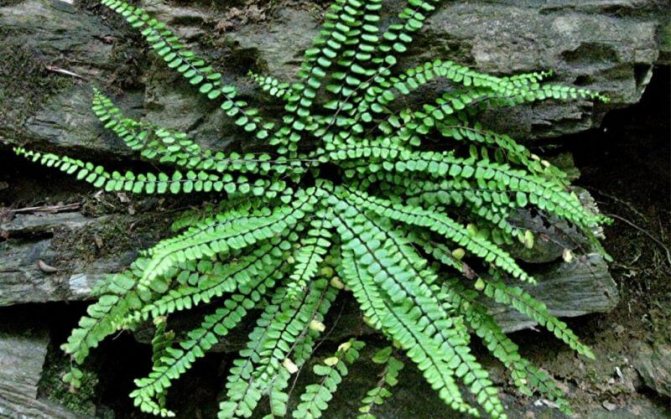

Broad-veined
Australia and North America are considered to be the homeland of this fern species. Broad-veined grows up to 45 centimeters in height. It differs from other species with long, feathery, dark leaves that are directed upwards. Ripening and harvesting of fruits occurs by mid-August.
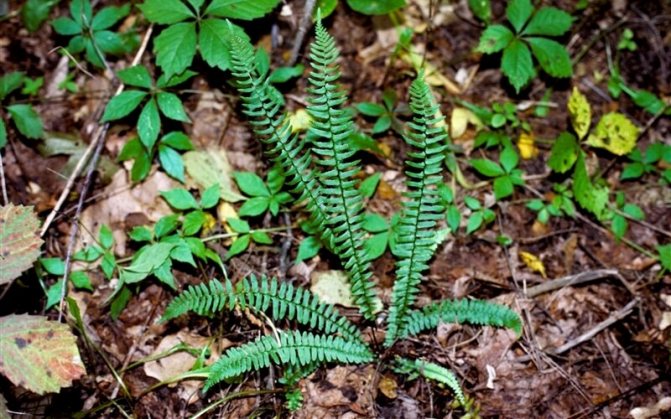

The black
Africa, Eurasia, these are the places where the fern is spread. It does not stand out in height, it grows to an average of 30-35 cm. Beautiful, carved, triangular leaves growing from a recessed socket... The sporangia are ready for reproduction by the end of summer. They can be scraped off the underside of the frond. What the Asplenium Black variety looks like can be seen in the photo below:


Pinned
An interesting perennial epiphyte for flower growers. Grows in the forests of the Northern regions of the United States. A cultivated species, easy to maintain, not afraid of sub-zero temperatures. The height is small, only 25-30 cm. A fern with wide, long, dissected fronds. Seed collection is possible by the end of August. In the photo below, the Asplenium Peristonadrezanny variety:
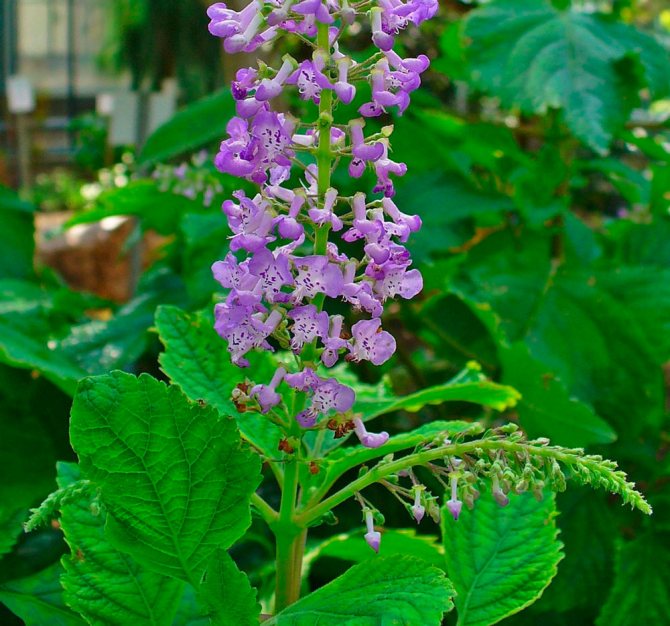

Incised
This specimen is a winter-hardy variety of Asplenium. Height, not more than 32 cm. It has an emerald color, wide, feathery foliage. Rhizomes are shortened, branched, covered with rough processes. Harvesting of spores for breeding begins in July.


Features of caring for indoor asplenium
Temperature: Asplenium belongs to thermophilic ferns, it is desirable that the thermometer be around 20..25 ° C, in winter not lower than 18 ° C. Does not tolerate drafts.
Lighting: The place for the asplenium should be light enough, but with shade from direct sunlight, light partial shade is possible, but not a dark place.
Watering: Watering plentifully from spring to autumn and moderate in winter. Instead of regular watering, it is recommended to immerse the plant pots in a container of water from time to time. Asplenium does not tolerate hard and chlorinated water; water at room temperature is used for irrigation, which has settled for at least 12 hours.
Fertilizer: Fern feeding is carried out once a month from April to September with a weakly concentrated fertilizer solution (approximately half the dose for plants such as philodendrons or ficuses).
Air humidity: Aspleniums need humid air, about 60%. In dry air, the leaves of the plant dry out. Best placed on a wide pallet covered with expanded clay or gravel. They also water the soil in the pot and pour water into the pan. If there is a central heating battery nearby, then it should always be hung with a damp towel or sheet.
Transfer: Asplenium is transplanted annually or every other year. Does not tolerate planting in too large a container. The soil should have a slightly acidic reaction. Loose soil - 1 part leaf, 2 parts peat, 0.5 parts humus soil and 1 part sand. You can use a commercial orchid potting mix.
Reproduction: Propagate asplenium, like all other ferns, by spores and division of the bush.
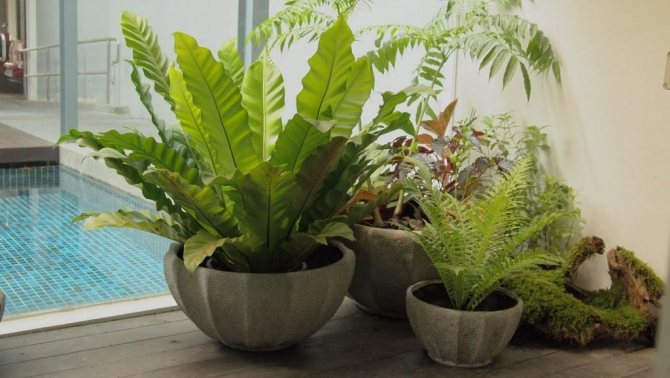

Asplenium nesting, or Kostenets nesting (Asplenium nidus) (left). <>
Transplant, reproduction and care
Young aspleniums should be transplanted every year, best in spring from March to May. Older plants are transplanted every two years. The pot for the plant should be chosen according to the size, you should not buy a pot that is too large.
The root system of the plant is very developed, the roots are strongly intertwined and cling to the pot, so when transplanting, you may have to break the pot.
The soil for the plant is suitable for purchased, for orchids. The soil is needed loose, with a high content of peat, necessarily slightly acidic. It is necessary to add sand and charcoal to the soil, since it is necessary to ensure good water penetration of the soil.
It is necessary to fertilize the land from the end of winter until the beginning of summer.The main thing is not to overdo it, the fertilizer is best mixed with water.
Look with this evergreen crescent asparagus
The plant propagates with the help of lateral shoots. But provided that it grows in an apartment or office, shoots will appear extremely rarely, in fact, never, so reproduction in this way is virtually impossible.
Adult specimens can reproduce with the help of spores, but this process is quite complicated, and, most likely, you will have to contact professionals who know the technique of carrying out the process and have the necessary devices.
You can also propagate a plant by dividing an adult into several pieces. This should be done in the spring. It is worth planting separated plants under a film, and remove it only after the sprouts are stronger.
It is also necessary to constantly remove dry leaves at the base. But it is not worth removing dust from young leaves, the plant is quite easy to damage. Leaf polish is also not recommended.
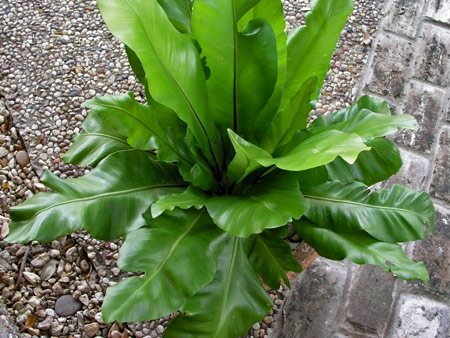

Growing asplenium at home
Aspleniums - do not like too bright sunlight. Sunlight causes browning and death of leaves - (wai). Grows well near north-facing windows.
For good growth for asplenium in summer, the optimum temperature is 22 ° C; with low air humidity, the plant cannot tolerate temperatures above 25 ° C. In winter, the optimum temperature is within 15 ... 20 ° C, a temperature drop below 10 ° C can lead to the death of wai, and sometimes to the death of the plant. Plants do not tolerate drafts, cold air and dust.
In the summer, asplenium is watered regularly, the earthen lump should not dry out, this can lead to the withering away of the wai, and waterlogging should not be allowed either. It is optimal to water by lowering the plant into a vessel with water; as soon as the top layer shines with moisture, the pot is removed, the excess water is allowed to drain and put in a permanent place. In winter, the fern is watered sparingly, depending on the requirements of the plant and the dryness of the air. For irrigation, use soft water at room temperature. It must be remembered that overdrying, like excessive waterlogging of an earthen coma, is detrimental to the plant.
Asplenium loves frequent spraying; in summer, at high temperatures (above 22 ° C), dry air can lead to the death of wai, if this happens, cut them off. Spray the plant regularly and new fronds will appear soon. Place the fern pot in a larger bowl filled with damp peat, or on a tray with damp pebbles. In winter, sprinkle asplenium with soft warm water every day; if the room is cool, then spraying should be reduced to avoid mold.
In the summer, once a month, when watering, feed the asplenium with mineral and organic fertilizers of half the concentration.
Only damaged or very old leaves should be trimmed. If the asplenium bush accidentally dries up, cut off the dried leaves, and what remains - regularly water and spray twice a day - young leaves will soon appear. Among other things, daily spraying of the fern keeps the plant clean. Do not use any formulation to make the leaves shine.
Asplenium is transplanted in the spring (if the pot is too small for the plant), after the plant begins to grow. For young plants with delicate roots, a mixture consisting of peat, leaf, humus earth and sand (2: 2: 2: 1) is used. Adult large specimens of fern are planted in a mixture of sod, leaf, peat, humus soil and sand (2: 3: 3: 1: 1). Small shards and pieces of charcoal are added to this mixture, and chopped sphagnum moss can also be added.
When transplanting, dead roots are removed, and live ones are not cut off and, if possible, do not damage, since they grow very slowly.Don't push the soil too hard - ferns love loose soil at the roots. After transplanting, the plant is watered with warm water and sprayed. Choose a wide pot for planting.


Asplenium breeding, or Kostenets breeding (Asplenium nidus).
Asplenium ebony (Asplenium platyneuron)
A small graceful fern lives in the forest zone of North America. Asplenium, as in the photo, feels good both in partial shade and in shady places. With good endurance, common to all related species, asplenium ebony negatively refers to excess moisture. The height of an adult specimen can vary from 30 to 50 cm.
Petioles are thin brownish-red. The leaf plates are light green, leathery. Depending on the location on the sheet, the segments are 15 to 2 mm in size. The shape of the alternating lobes is triangular or trapezoidal.
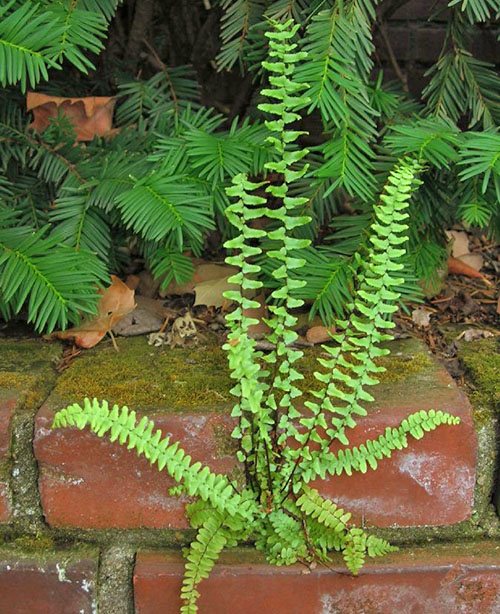

The rhizome is very short, requiring a small amount of soil, so asplenium, as in the photo, can be used for vertical gardening.
Reproduction of asplenium
Asplenium is propagated by dividing the rhizome, brood buds and spores.
By dividing the bush, the overgrown asplenium is propagated in the spring, during transplantation. The bush is carefully separated by hands, paying attention to the number of growth points. If there is only one growth point or they are few in number, then it is impossible to divide the fern, this can lead to death. Young plants do not start growing immediately after division.
In viviparous asplenium species, meristematic tubercles appear on the veins, giving rise to a brood bud. A daughter plant with dissected leaves and short petioles develops from the bud. Separating and falling, they move on to independent existence. You can break off brood fern buds along with pieces of frond and root them in a loose substrate. You can also use young plants that are already rooted on their own.
You can try to propagate asplenium from the spores that form on the underside of the leaves. They are sown in early spring, best of all in a nursery, heated from below, where a temperature of 22 ° C is maintained.
Cut off a fern leaf and scrape the spores onto paper. Fill the nursery with a layer of drainage and decontaminated soil for sowing seeds. Water the soil well and scatter spores as evenly as possible. Cover the nursery with glass and place in a dark, warm place. Remove the glass briefly each day to ventilate, but do not let the ground dry out.
The nursery should be kept in the dark until the plants appear (this will happen in 4-12 weeks). Then transfer it to a lighted place and remove the glass. When the plants grow, thin them out, leaving the strongest at a distance of 2.5 cm from each other. Young specimens that develop well after thinning can be transplanted into pots with peat soil - 2-3 plants together.
Diseases and pests of asplenium
The most common diseases, such as gray rot and leaf bacteriosis, which lead to leaf drying, can be prevented by limiting watering of the fern. Stains caused by Phillosticta and Taphina can be treated with cineb and maneb fungicides. Leaf spot is sometimes associated with improper use of fertilizers (exceeding the required dose) or an unsuitable composition of the soil for the fern: it must have a low acidity.
Brown spots can be a sign of a leaf nematode - in this case, the plant is best discarded - it is very difficult to fight the nematode. Damaged leaf edges may indicate unfavorable environmental conditions (dry air, irregular watering, etc.). It is not recommended to apply glitter to the leaves!
Possible difficulties
If the irrigation regime is violated, gray or root rot forms on the asplenium, and bacterial infections can also develop.If foci of disease are found on leaves or shoots, diseased fronds should be cut off and the soil should be treated with fungicides.
Of the parasites, only nematodes settle on the asplenium. However, pest control is extremely difficult. They penetrate under the skin of the leaf, which protects against the effects of insecticides. Only cardinal pruning and removal of all damaged areas helps. Sometimes only the complete destruction of the fern saves.
If the tips of the leaves dry out, the air humidity should be increased and the crown should be sprayed more often. If the plant becomes pale and loses color, this indicates a sunburn. It is recommended to rearrange the bone in the shade. Leaf spot in combination with curled edges indicates that the room temperature is too low.
Post Views: 1


